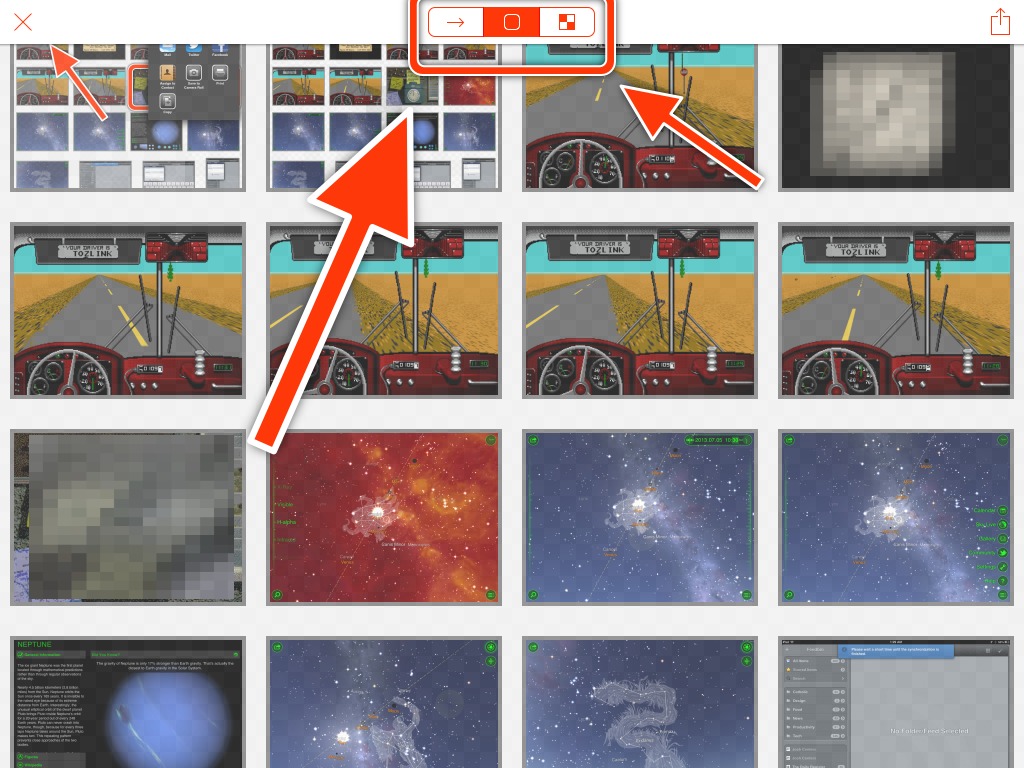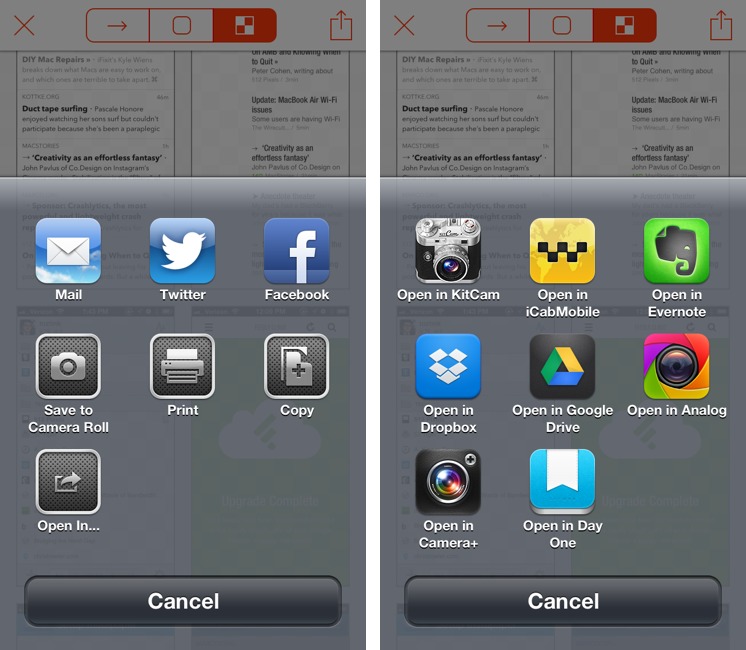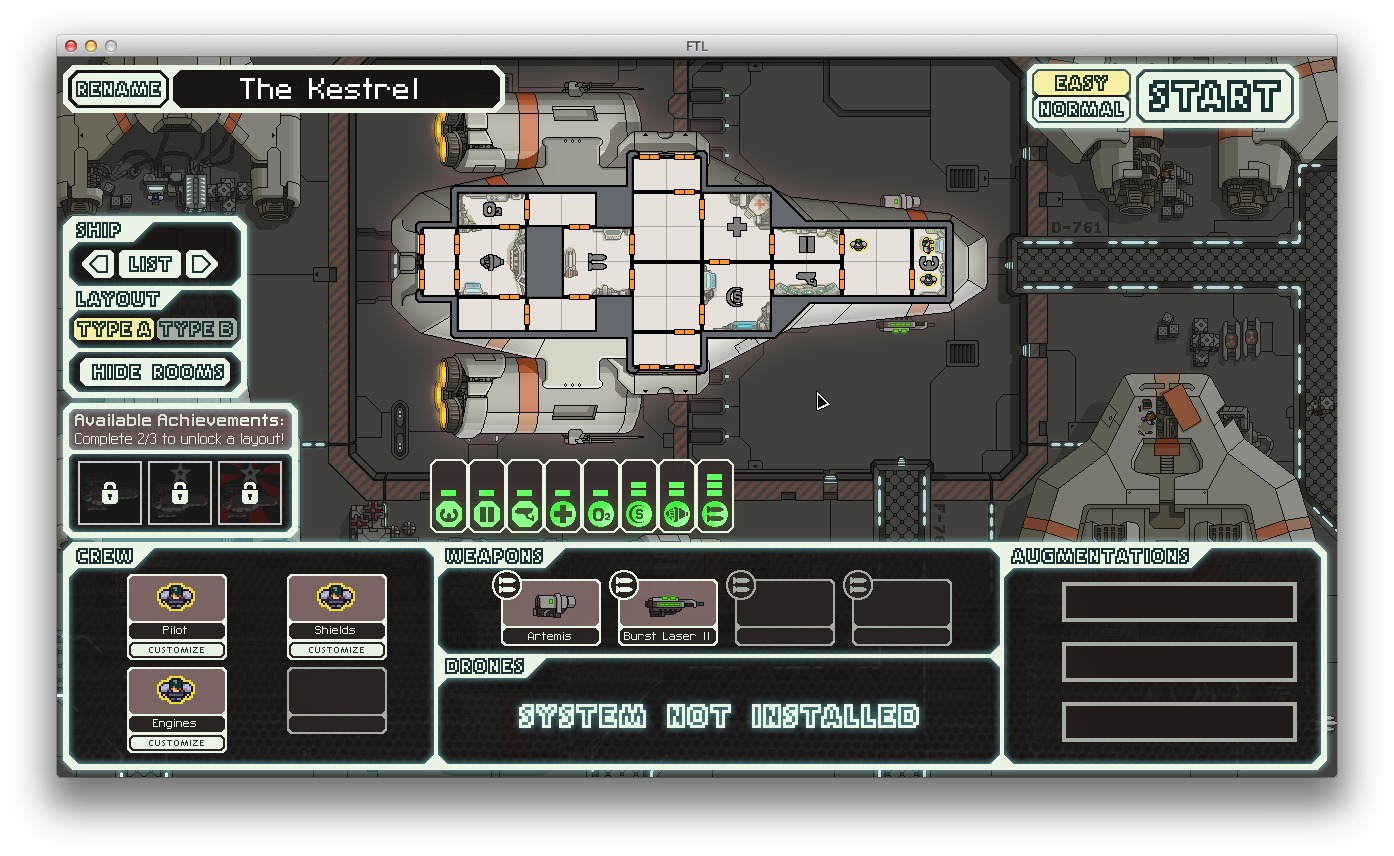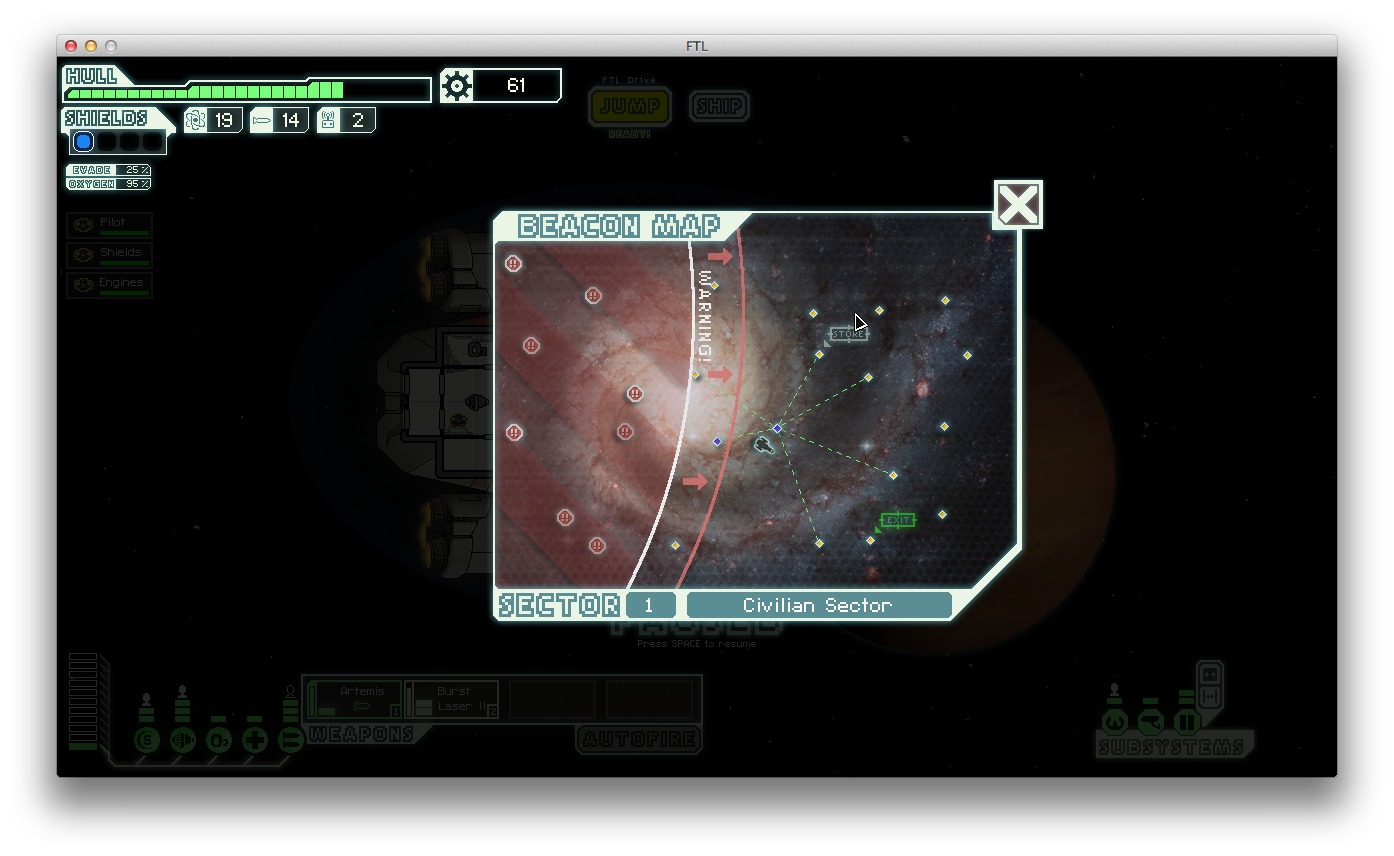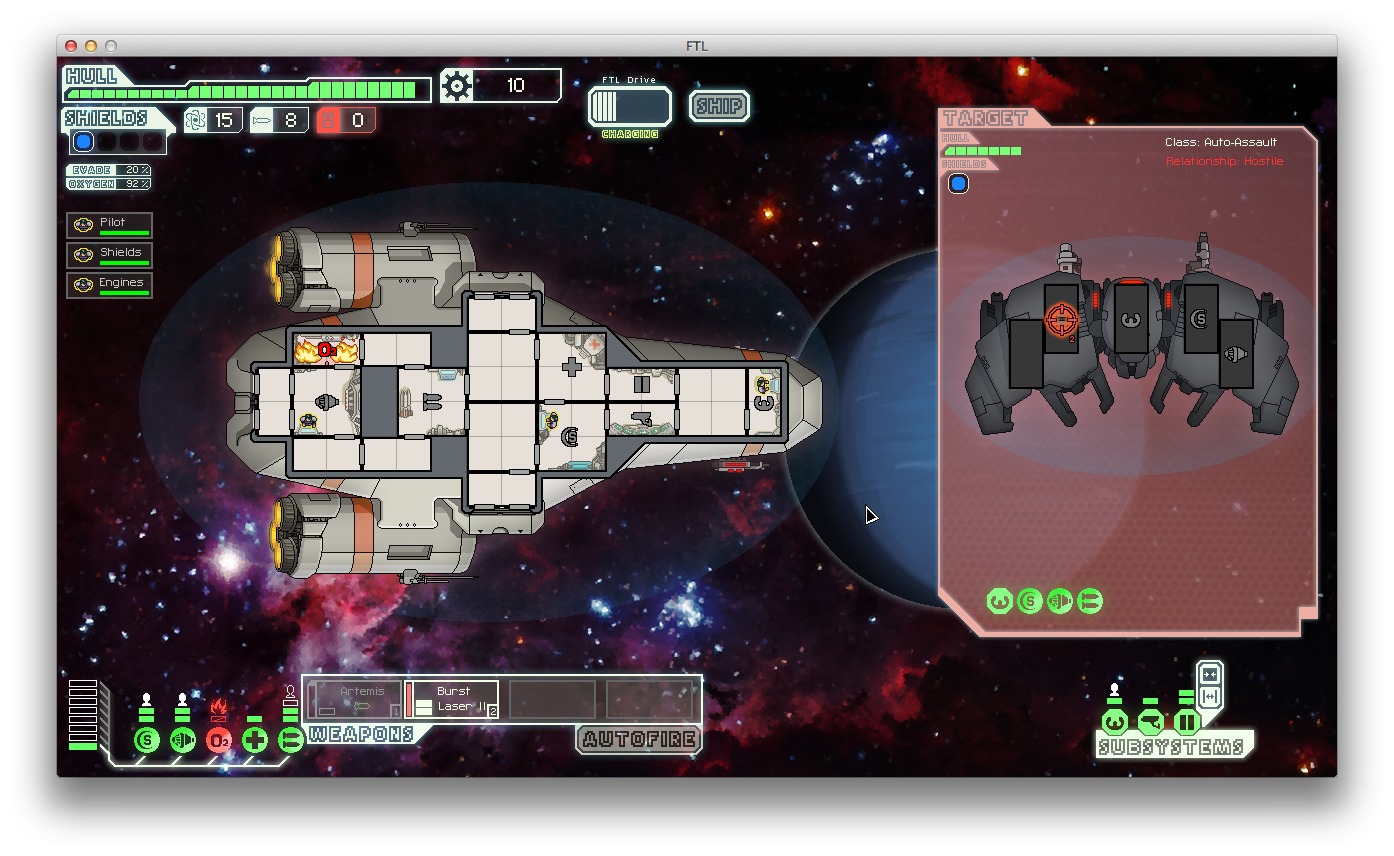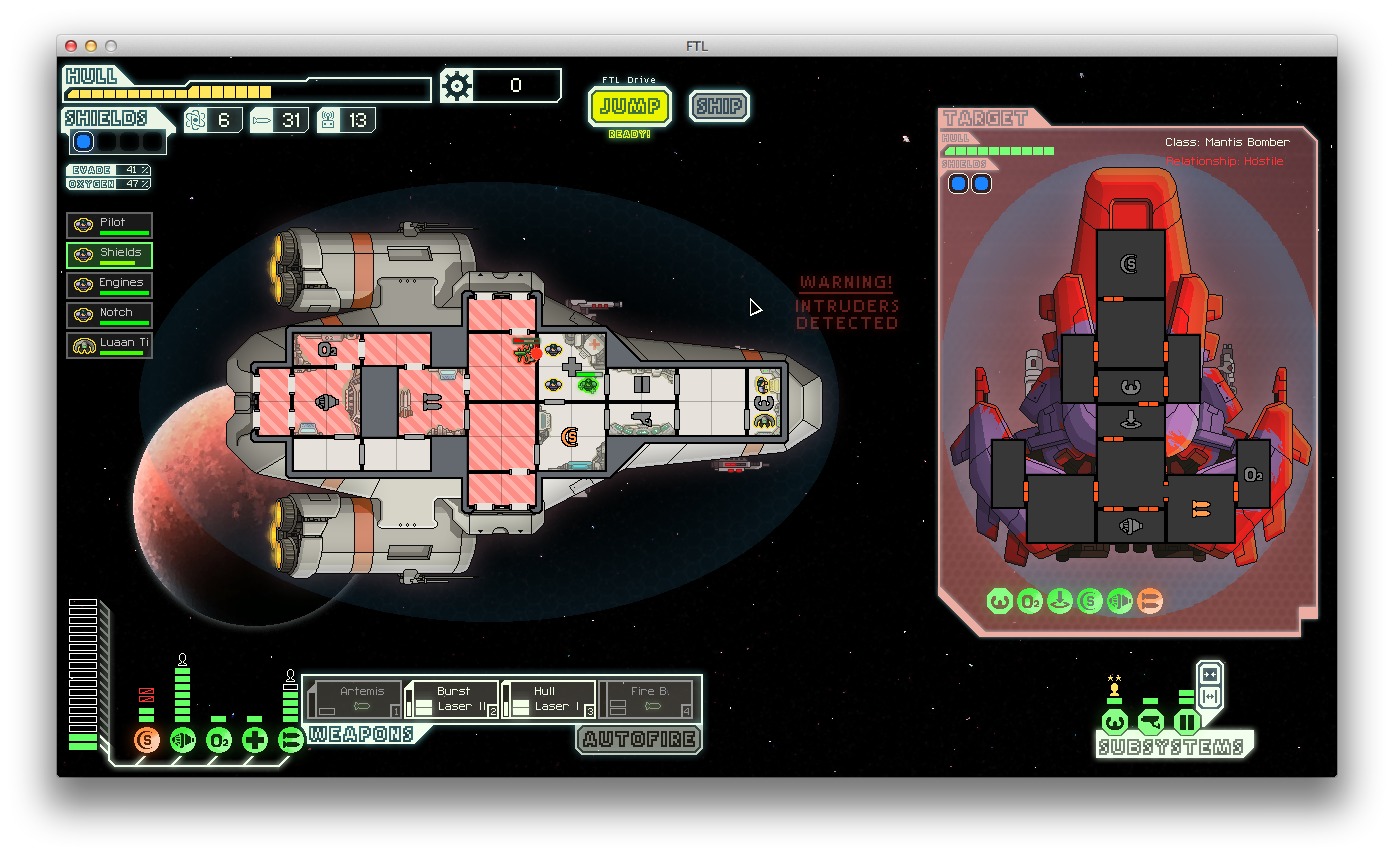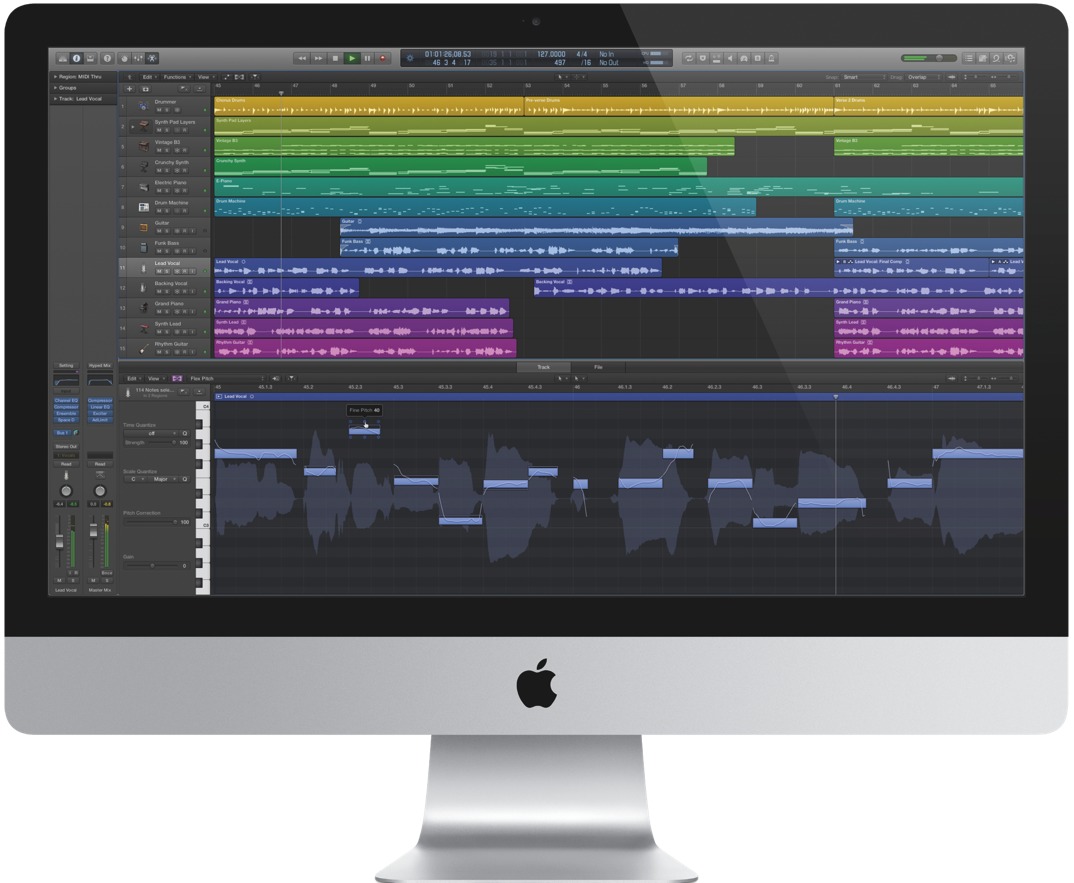TidBITS#1183/22-Jul-2013
Students may not be thinking about school over summer break, but we are. Recent graduate David Rabinowitz looks back on the technology he used throughout his years of education and talks with a pair of innovators who are building the iPad into the everyday educational experience in their schools. The major cellular carriers want to revolutionize how often you upgrade smartphones, but are these programs worth the asking price? Josh Centers investigates, and also reviews a new iOS image annotation app from Marco Arment called Bugshot. You’ll read about how Apple’s Developer Center was compromised by a Turkish security researcher in ExtraBITS, but Adam Engst looks at a vulnerability in the Tumblr iOS app that likely affects more people. Jeff Carlson’s streamed “Take Control of Your Digital Photos” continues, offering advice this week on how (and why!) to judge, rate, flag, label, and cull photos. Finally, Josh wraps up with a look on how to take your Mac on a challenging romp across the galaxy in FTL: Faster Than Light. Notable software releases this week include MacBook Air (Mid 2013) Software Update 1.0, TextWrangler 4.5.3, BBEdit 10.5.5, and Logic Pro X 10.0.
Tumblr iOS App Allows Passwords to Be Sniffed
If you use the iOS app for the popular microblogging and photo-sharing service Tumblr, make sure to download version 3.4.1 (or later) right away to avoid a security vulnerability that could allow an attacker to sniff your Tumblr password in transit. And, of course, change your password on Tumblr and any other sites that might share the same password!
The implication from Tumblr’s brief blog post apologizing for the lapse is that certain versions of the app were transmitting your password in the clear, such that anyone listening in on Wi-Fi traffic on a public hotspot, for instance, could see your password. Lest you feel secure in the fact that no one in the coffee shop where you’re working looks sketchy, remember that the Wi-Fi network is undoubtedly accessible from various nearby locations. Even more concerning is the fact that Wi-Fi sniffing software could be an automated process installed by Windows malware and running unnoticed on a compromised PC in the office next
door.
I don’t suggest such a scenario to induce paranoia, but to illustrate why the detailed advice that Joe Kissell gives in “Take Control of Your Passwords” is so important. In this case, you have some control over whether your Tumblr password is exposed — only those using a previous version of the Tumblr app on a Wi-Fi network that was being sniffed need worry. But you have no control over whether a company’s account system is hacked, so all that protects you when that happens are strong passwords that are never reused across multiple sites.
Stay safe out there.
T-Mobile and AT&T Offer Frequent Device Upgrades — For a Price
Earlier this month, T-Mobile announced a new paid upgrade plan called Jump, which lets you trade in your smartphone and purchase a new subsidized smartphone every six months, for a $10 monthly fee. Since that announcement, AT&T has jumped into the game with its new Next upgrade plan, and Verizon has confirmed that it will follow suit in August with a service called Edge.
These plans probably aren’t worthwhile if you’re an iPhone user, since Apple releases only one model per year, and tends to offer staggered updates, where one year sees the iPhone 3G or iPhone 4, and the next sees the tweaked iPhone 3GS or iPhone 4S. It’s not a stretch to guess that the next iPhone will be called iPhone 5S, and won’t be a quantum leap over the iPhone 5. Plus, Apple supports its iOS devices for years, something that’s uncommon among Android handsets. iOS 7, due later this year, will support the iPhone 4, which was released over three years ago. Some pundits have criticized Apple for its slow phone update cycle, but most normal people don’t want to feel as though their expensive smartphone is obsolete after a
few months.
Jump for Toy — Yet, if you prefer Android or Windows Phone devices, which are constantly being iterated, then Jump might make sense. The Verge’s Nathan Ingraham did the math to tease out the savings. An unsubsidized Samsung Galaxy S4 costs $579.99. If you purchase it through an installment plan on T-Mobile with Jump, you’ll pay $99.99 up front, plus $30 per month for Jump. If you upgrade after six months, you’ll have paid $279.99 for the use of the initial Galaxy S4 for that time. If you upgrade twice in the year, you’ll pay $559.98 total for two smartphones, which is
slightly less than the cost of one unsubsidized phone. The catch, of course, is that you don’t get to keep the Galaxy S4 — when you upgrade, you have to trade it in.
Jump isn’t a bad deal, but it’s an extreme niche: gadget enthusiasts with disposable income who can obtain satisfactory service from T-Mobile’s network, which isn’t as extensive as Verizon’s or AT&T’s. On the upside, Jump also serves as an insurance plan, so if you buy carrier insurance, which already runs $8 a month from T-Mobile, then you might as well Jump. In my experience, however, carrier insurance is a rip-off — AppleCare+ and Square Trade are
less expensive at $99 for two years of coverage, and often work better.
While I admire T-Mobile’s commitment to transparency and innovation, like many Americans, there’s not a bar of T-Mobile service anywhere near my house. So anything T-Mobile does is a complete nonstarter for me.
The Next Big Ding — If you’re an AT&T customer looking to upgrade more often than every two years, you might be tempted by the company’s new Next plan. But The Verge has again done the math, and Nilay Patel summed it up best: “No no no no no no no.” Next is more expensive than Jump — costing between $15 and $50 a month — and allows only one upgrade a year. Plus, AT&T’s pricing plans, unlike T-Mobile’s, build device subsidies into their service fees. So you’ll be paying more than you would with T-Mobile for the hardware, then paying for the phone
again with your service, and you won’t even get to keep the phone. You’re better off buying an unlocked Galaxy S4 and AT&T service separately.
Why are these plans being introduced so quickly? As Kevin Tofel of GigaOM discovered: people aren’t upgrading their smartphones. (Bad consumers! Bad!) This is an issue for carriers who have spent billions on more-efficient LTE networks. They want to be able to justify their investments, and also reduce their data costs. In the case of AT&T, since the company is effectively double-charging for its phones, Next will be a cash cow. If the reports are to be believed, Verizon’s plan will be similar,
making you pay for half of an unsubsidized device before upgrading, all while paying the same service rates as customers who purchase subsidized phones.
Overall, these developments make me happier than ever to be an iPhone customer. My first smartphone was a Droid, purchased in November 2009. However, Motorola stopped updating its “flagship” phone after only a few months. Meanwhile, the phone I replaced it with after only a few months, an iPhone 4, will be compatible with iOS 7 and will likely be supported until sometime in 2014. The iPhone 5 I replaced that with will likely be supported for just as many years, and, despite my dropping it numerous times, without a case, it still looks and works great (other than the chamfer scuffing that’s endemic to the black model). Apple’s products aren’t perfect, but they age far more slowly and gracefully than most consumer
electronics.
Bugshot Brings iOS 7-Style Image Annotation to the iPhone and iPad
Developer Marco Arment, creator of Instapaper and The Magazine, has released a new $0.99 iOS app called Bugshot. It’s designed to help users report visual issues, like bugs, typos, and design problems. Even if you don’t need those capabilities often, you may be interested in it for its visual look alone.
Arment designed Bugshot to mimic the design language used in iOS 7, even if you use iOS 6. As such, it lacks visual chrome, relying instead on thin orange lines on a white background. Even the share button emulates the one used in iOS 7.
Bugshot couldn’t be simpler. When you launch the app, it asks to access your Camera Roll. It then displays all the images that it determines are screenshots, so you don’t have to filter through every image in your camera roll.
Once you pick an image, you can annotate it with either an orange arrow or box. Click the appropriate button at the top of the screen and draw with your finger. The longer the arrow you draw, the larger it grows. Unfortunately, there’s no text annotation. However, as of the Bugshot 1.1 update, released 22 July 2013, the app also features a Blur tool to pixelate private information.
If you need to resize one of your arrows or boxes, just pinch it with two fingers. If you need to delete one, double-tap it.
Once you’ve annotated your image, click the share button to send the image to Mail, Twitter, Facebook, the Camera Roll, or a printer, or just copy the image. As of the 1.1 update, you can also open your Bugshot drawings in any other app that supports images.
Bugshot won’t change the world, but it’s a fun and useful visual communication tool. And if you’ve been dying to get a feel for iOS 7’s interface without becoming a developer or potentially bricking a device, Bugshot is a cheap way to do so.
Chapter 5 of “Take Control of Your Digital Photos” Available
When it comes to your digital photos, it’s good to be judgmental, because you need to set up a practical workflow that will help you easily determine which shots you want to share with others, which need work in an image editor, and which should be hidden or deleted. Judging your photos also helps you become a better photographer, as you look at each shot critically to determine what you’re doing right and wrong. To help you come up with an approach that works for you, read Chapter 5, “Judge Your Photos,” from our streamed ebook — Jeff Carlson’s “Take Control of Your Digital Photos” — available now on the TidBITS Web site.
In it, Jeff begins by explaining why it’s important to develop a consistent rating system that you can apply to all your photos quickly and easily, and shares why you might want to apply labels and flags in addition to star ratings. Then he focuses on different ways to cull the photos that don’t rate — if you’re ruthless, you might wonder why people don’t just delete such photos, but not everyone can quite bring themselves to delete with abandon, and Jeff offers a few different possibilities from which to choose. And since Jeff is trying hard to offer general direction while remaining aware that his particular method won’t be appropriate for everyone, if you have a rating and deletion system that works well for you, please
share it in the comments!
As with Chapter 4, “Best Practices for Importing Photos,” “Chapter 3, “Choose a Photo-Management Application,” and Chapter 2, “Shoot Smarter,” this chapter is available for free, but only to TidBITS members; everyone is welcome to read Chapter 1, “A Smart Approach to Photo Management,” to see where Jeff is headed. The full ebook will be available for purchase by everyone once it’s complete.
Publishing this book in its entirety for TidBITS members as it’s being written is one of the ways we thank TidBITS members for their support. We also hope it encourages those of you who have been reading TidBITS for free for years to help us continue to bring you carefully considered, professionally written and edited articles each week (for more details, see “TidBITS Needs Your Support in 2013: Join Our Membership Program,” 17 December 2012).
The Evolution of Technology in the Classroom
My parents’ classrooms were similar to those that their parents sat in every day. Both were filled with books, pencils, notebooks, and chalkboards, and what technology existed — overhead projectors starting in the 1960s, TVs and VCRs in the 1980s — was the exclusive province of the AV Club. Thankfully, those items are slowly being pushed out of classrooms in favor of newer and more interactive technology. But if you haven’t set foot in a classroom for years, you might think that educational technology still means desktop computers. They’re still commonplace, but newer and more sophisticated devices are also gaining ground.
A Personal Tour of Educational Technology — Graduating from the University of Virginia this spring caused me to think back on both my time in school and the technology that accompanied me. It all started with desktop computers in the late 1990s — Macs running Netscape Navigator in my elementary school’s computer lab. Those now-quaint machines have since been replaced with much more modern PCs, and my old elementary school now even boasts an assortment of iPads and laptops.
What we did with those computers was, frankly, a little lame. In third grade, along with learning cursive, we learned typing, although I never had to type any further assignments in elementary school. Now, many schools are opting to teach only typing and forgo cursive altogether. Given how little I find myself needing to write by hand now — much less in cursive — I don’t find this emphasis on typing troubling.
Technology became a more significant aspect of education in high school. Toward the end of my time at South Lakes High School (Fairfax County, Virginia) from 2005 to 2009, a $50 million renovation resulted in a school that was outfitted with the latest and greatest technology. Every classroom gained a digital LCD projector that could be hooked to the teacher’s laptop and used in conjunction with a document camera to display whatever was on the teacher’s desk on a screen at the front of the classroom. Many rooms also got SMART Boards, which are interactive, touch-sensitive replacements for chalkboards, making it possible for teachers and students to drag and manipulate the images projected on the board. Since then, SMART Boards have become popular, and every school in Fairfax County is installing them.
My fondest memory of SMART Boards came during high school geometry. The teacher was explaining some of the rules and formulas that apply to triangles and circles. He taught us how we could figure out the size of a triangle that would fit perfectly inside a circle of a particular diameter. To demonstrate his point, he drew a triangle on the SMART Board and then dragged it inside the circle. To everyone’s amazement, it fit perfectly! Before SMART Boards, the teacher would have just told us that the triangle would fit or would have had to redraw it inside the circle.
Although many teachers used their SMART Boards, not all were enthused about them. One of my math teachers just used it as a surface to shine the projector on. Once, she even used a marker on it, instead of the digital writing pen, leaving a permanent stain.
South Lakes High School now has a ratio of 1 computer for every 1.6 students. Students can even bring in their own laptops or tablets if they get parental consent. Laptops are starting to replace desktops, and now there are even laptop trolleys students can borrow from. Currently, “a fair number” of students bring their own laptops, according to McNeill Bauer, a South Lakes High School senior. He said that it depends on the class and teacher how much the laptops are used, and said that “at least 50 percent of people in my history class use laptops, but nobody does in math.” Just as I discovered in college, having a laptop
available in class is better suited to some subjects — and some teachers — than others.
As I mentioned in a previous article (see “Living through the Evolution of Etextbooks,” 5 April 2013), technology has become ubiquitous in college. Almost every student has a laptop and some are starting to bring tablets to class, as you might expect.
But one commonplace gadget that few outside of academia have seen is the iClicker, which resembles a TV remote and lets instructors poll the class directly. The iClicker has five buttons, each corresponding to an answer, and when the professor asks a question, iClicker-wielding students respond by pushing a button. Responses are received by an iClicker Base at the front of the room — it uses the 900 MHz spectrum to avoid interfering with Wi-Fi. Along with providing professors an easy way to quiz students on the topic at hand, iClickers are the bane of any student who blows off class, since they serve as an instantaneous way to
take attendance and determine who’s paying attention.
The most compelling technology I used in college was the experiment feature in a course management system called Aplia. In addition to managing homework through Aplia, the professor could launch an experiment during class. Since this was a microeconomics course with over 600 students, it was the perfect environment.
One day, the professor asked us to bring our laptops in order to participate in a demonstration of the effects of price ceilings and price floors. Through the Aplia Web site, everyone was assigned to be either a buyer or seller in a simulated market for used textbooks. Each student was also assigned a different dollar amount at which they valued the textbook. When the virtual market was opened, people were free to make bids and offers. It was fascinating to see, in real time, the supply and demand curves slope toward each other and eventually meet at an equilibrium. The demonstration showed that in a controlled environment,
when people are self-interested and rational, the market usually behaves in predictable ways. Aplia offers other economics experiments, like one illustrating the tragedy of the commons, and all experiments can be demoed on the company’s Web site (click Go To Demo).
Less successful was another in-class technology called Class Spot, which is essentially a way to let students share their screens with the entire class, and to collaborate by controlling a shared screen, called the “teaching wall.” The professor controls who can be on the screen at the same time, and can even lock the teaching wall to regain control over the class. The idea is great in theory, but the system was buggy and suffered from significant lag — a particular irony in
a senior-level computer science class. Plus, the Class Spot client software was difficult to install, and, at the time, wasn’t even compatible with OS X 10.8 Mountain Lion, which I was running on my MacBook Air. After a few minutes of use from those who could get it to work at all, the professor shut down Class Spot and continued the lecture. We never used it again, but I hope future classes give it a try and have a better experience.
The iPad in Education — One piece of technology that never came up during my years in school was the iPad, which has made significant inroads in primary schools over the last few years. Fraser Speirs, an education consultant and head of IT at the Cedars School of Excellence in Scotland, is a pioneer in the field. He is also an Apple Distinguished Educator who gives presentations about implementing technology in education.
Under his direction, the Cedars School of Excellence bought and distributed iPads for all 120 students and teachers in the school. Although the school is small, the experiment has had such promising results that the school later adopted iTunes U as the digital learning platform for both creating their own courses and using other private iTunes U courses in class. Although iTunes U was initially embedded within iTunes, there’s now an iTunes U app for iOS. Through the iTunes U app, teachers can distribute their own text, audio, video, and
presentations, or material from educators around the world. iTunes U also integrates with iBooks for textual material, enabling students to highlight important passages and take notes with course materials.
According to Speirs, iTunes U “helped a segment of the student population get better organised with their homework, and submission rates have gone up…[and] students vastly prefer courses that embed the content right in it.” He said that overall, the iTunes U initiative has gone well and that the school will most likely continue it in the future, with a few modifications, like making content, “more ‘native’ to iTunes U, rather than taking what we have in PDF files and Keynotes and dumping it into iTunes U.”
The launch of the iPad came just at the right time for Speirs and the Cedars School of Excellence. Months before its announcement, they were toying with the idea of buying every student an iPod touch. They needed more computers to satisfy the demand for increased classroom technology use and wanted each student to have a computer. The iPad satisfied the need for a student-focused computer and fit perfectly between an iPod touch and a MacBook.
And, yes, Speirs is adamant that the iPad is a computer, and disagrees with the notion that it is merely a content-consumption device. He points to a number of uses in his school, from taking notes to drawing, that prove the iPad can be used to create.
When asked about the overall success of the iPad deployment, he said, “The initiative has been very successful. We are now three years into it and it is progressing well. We have seen a real cultural change around computing in schools, where once the use of a computer or the Internet was something special, it’s now commonplace for us.”
Bradley Chambers, Fraser Speirs’s co-host of the Out of School podcast about the intersection of technology in education and Director of IT at the Brainerd Baptist School in Tennessee, is also a proponent of iPads in education. “From a hardware perspective, the iPad (and iOS) have removed the barriers of computing for the average person,” said Chambers. He prefers the iPad over laptops, saying that PCs and Macs are complicated devices that are easy to break. Although the Brainerd Baptist School doesn’t have the 1-to-1 iPad to student ratio enjoyed by the Cedars School for Excellence, with 81
iPads for 305 students, the school still uses them in interesting and non-obvious ways. For example first-grade students used them last year to scan QR codes around the school that triggered animal noises.
What about the fragility of the iPad? Considering that they cost about five times what a regular textbook costs, the iPads need to be able to stand up to years of use, and, given that we’re talking about K-12 schools here, abuse. The iPads at Speirs’s school are indeed holding up well. In fact, they are still using original iPads that are almost 3 years old! Despite the iPads being handed even to kindergarteners, the school’s breakage rate is only about 3 percent per year, and the only protection the iPads get is the original Apple iPad case.
Even apart from iTunes U, Apple is pushing hard on moving the iPad into education, emphasizing software such as iBooks Author for creating course content and technologies like AirPlay for putting class materials on the big screen. And, of course, there are innumerable apps designed for education — the hardest part for teachers is probably figuring out which are worthwhile and can be integrated into a curriculum. On the management side, Apple also makes Apple Configurator, a Mac app that makes it
easy to configure and deploy iOS devices in institutions like schools, simplifying the process of changing settings, updating the OS, and installing apps on multiple connected devices at once.
But not all that’s necessary can come from the private sector — increasingly, these devices are nearly useless without a fast and reliable Internet connection, something that’s far from ubiquitous in K-12 schools, and particularly those in lower-income areas. The United States famously trails behind a number of other countries in terms of high-speed Internet access, and to remedy this, President Obama recently unveiled the ConnectedEd initiative, which has the ambitious goal of bringing high-speed
Internet access to 99 percent of students within five years. The initiative will also support training teachers to use new technology and will encourage private-sector investment, although specific details remain fuzzy. Nonetheless, the fact that the White House is devoting attention to the topic of educational technology bodes well for improvements in schools whose budgets have not provided the kind of support I saw throughout my K-12 schooling, or that exists in private schools like those that employ Fraser Speirs and Bradley Chambers.
FunBITS: FTL: Faster Than Light
FTL: Faster Than Light is a gripping space adventure for the Mac that has you on the run from a massive enemy fleet. You’ll have to contend with limited resources, enemy ships, boarding parties, and all the dangers of deep space apart from mind-numbing boredom. It has won mounds of awards, including IGN’s Best PC Strategy Game of 2012 and PC Gamer’s Best Shortform Game of 2012, and it was named one of NPR’s Best Games of 2012. But as good as FTL is, it’s also tough, and I have a few key tips that will help you stay alive long enough to enjoy the game’s challenges.
FTL doesn’t offer much in terms of a backstory, but any science fiction fan has heard it all before anyway. You command a Federation starship, like the stereotypical Federation from Star Trek, which has obtained information vital in the war against an evil Rebellion that threatens the galaxy. Your mission is to “jump” from system to system until you reach Federation headquarters, all the while pursued by the Rebel Fleet. If you’re a fan of Battlestar Galactica, then you’ll love FTL, as the scenario is strikingly similar.
FTL isn’t your typical space simulation. It’s based on roguelikes like NetHack and Dungeon Crawl Stone Soup. Like those games, FTL’s game content is generated randomly, and failure means starting over from square one. Also, unlike most space sims, you control the crew inside your ship manually.
You start with three crew members, whom you can assign to various ship systems. You have to have one crew member in the cockpit to go anywhere, and you get bonuses for assigning crew to other systems, like engines, shields, and weapons. Each crew member earns experience the longer they use a particular system, so it’s a good idea to keep each member on one system, and to try and keep them alive.
A good practice is to rename your starting crew members to match the systems they’ll manage. For example, “Pilot,” “Engines,” “Shields.” That way, it’s easy to keep them assigned to what they do best. If you’re so inclined, you can even name your crew after characters from your favorite franchises: “Riker,” “Han,” “Adama,” — I even saw one player name his crew after the Starks from Game of Thrones. (Though I personally would rather have Tyrion Lannister at the helm than Ned Stark.)
Having complete control over everything that happens in the ship leads to some interesting possibilities. You and your crew will have to repair damaged systems, repel hostile boarding parties, and extinguish ship fires, among much else.
FTL doesn’t suffer fools, even in the game’s easy mode, which I highly recommend to beginners. You must pay close attention to everything on your ship. Did an enemy ship disable your oxygen generator? You had better send a crewman to repair it quickly, or it’s game over. And even after you repair it, you must remember to turn it back on. Ship fire? The good news is that you can open your ship’s airlocks and doors to drain the oxygen out of the room, suffocating the fire. But if you don’t remember to close the doors, you’ll suffocate your crew instead. I hate it when that happens. Fortunately, you can pause the game at any time to plot your course of action.
To up the ante, you’re in a constant struggle for limited resources. The single currency of the game is Scrap, which is used to upgrade and repair your ship, buy new components, buy fuel, and hire new crew members. You obtain Scrap from random events and from defeating enemy ships in battle, either destroying them or accepting their surrender.
Fuel is another source of tension. You use one unit of fuel every time you jump between systems. It’s a wise idea to buy fuel where you can find it, because it can become scarce later in the game. Run out, and you’ll be stranded in space, forced to wait for a passing merchant or enemy ship. Or even worse, the Rebel Fleet may catch up with you.
The game’s universe is split into sectors, each containing a number of solar systems. You must jump from system to system to reach the next sector. Each system has the potential for opportunity or doom. You could happen upon an abandoned hulk to strip for Scrap; find a store where you can buy supplies, upgrades, and crew members; or stumble across a hostile ship. As you jump through systems, the enemy fleet approaches from the left side of the screen, taking control of the systems it passes over. If you cross paths with the fleet, you’ll be forced to do battle, but you also don’t want to rush through the systems, as you’re going to need as many upgrades as you can buy.
Battles happen in real time. Your ship appears on the left of the screen, the enemy ship on the right — fortunately you’ll never have to fight more than one ship at a time. Early on, combat is simple: power up your weapons, take aim at the enemy ship’s systems, and systematically destroy them. My advice is to target enemy weapons first. Once disabled, the enemy can’t damage your hull, which costs precious Scrap to repair — and thus hampers your ship’s upgrades. Another tip is to fire your weapons together as a volley, since
that increases your chances of breaking through enemy shields.
Later in the game, enemy ships come equipped with teleporters, so you can expect to be boarded. Once on your ship, enemies attack your crew and sabotage your ship’s systems. Boarding parties are one of the toughest challenges for new players, but I have some tips to help. First, upgrade your doors to blast doors early on. Doing so costs only 20 Scrap, slows down the spread of fires, and most importantly, boarders will have to cut through a door before opening it, slowing them down. Second, pause the game as soon as they board, send as many
crew members as you can to the Medbay, and then open every door on the ship except for the Medbay, including airlocks. This will suck the oxygen out of the ship except for the Medbay, which in turn drains the enemy’s health. By the time they open the Medbay doors, their health will be low, and they’ll have to contend with a room full of your crew, who are constantly being healed by the Medbay. Third, save up your Scrap, and eventually you’ll be able to afford a teleporter to board the enemy’s ships yourself.
Destroying enemy ships often yields Scrap, but sometimes also weapons, fuel, and additional crew members. Unless it’s a Rebel Fleet ship. Fleet ships are incredibly tough, and the only reward for defeating them is one measly unit of fuel. Your best bet is to disable their weapons and teleporters until your FTL drive charges up, and then make a run for it. In general, if a fight isn’t going your way, go ahead and jump. I also advise upgrading your engines as early and often as possible, because that helps your FTL engines spin
up faster, and you’ll dodge more attacks as well, making engines even more valuable than shields, which don’t protect against missile attacks.
If you’re skilled and lucky enough to make it all the way to the end, you enter the Last Stand sector, where you must destroy the Rebel Flagship before it gets too close to the Federation base. Or so I’m told; I have yet to get that far.
FTL is a tough game. In fact, FTL might as well expand to “For The Loss,” because you’re going to die… a lot. But what I love about FTL, as opposed to more scripted games, is that its complexity and randomness lead to potentially great stories you can share. The FTL Forum is full of them. You teleport a boarding party to an enemy ship, but it jumps away with your crew. You run out of fuel, and manage to fight your way through the Rebel Fleet until you can reach a store. Or maybe, just once, you manage to defeat the Rebel Flagship and make it home alive.
I purchased FTL during a recent sale on Steam, Valve’s much-loved gaming service, for a measly $2.50. However, if you can buy the game direct from the developer during a sale, I think it’s actually a better deal. They give you a code to redeem on Steam, but they also include DRM-free copies of the game for Mac OS X 10.5 Leopard and later, Windows, and Linux (sadly, it’s not yet on iOS). In addition, the developers receive more of the purchase price. Outside of sales, FTL retails for $10 — relatively pricey in the App Store era, but still highly worthwhile, as given the dozens of hours of entertainment it offers.
TidBITS Watchlist: Notable Software Updates for 22 July 2013
MacBook Air (Mid 2013) Software Update 1.0 — Apple has released MacBook Air (Mid 2013) Software Update 1.0 for the latest generation of the MacBook Air. The biggest news is that it reportedly addresses the Wi-Fi connectivity issue reported by early adopters (see “New MacBook Air Owners Complaining of Wi-Fi Issues,” 21 June 2013). It also corrects a screen flicker issue when using Adobe Photoshop and an issue that caused audio volume fluctuation during video playback. (Free, 3.35 MB)
Read/post comments about MacBook Air (Mid 2013) Software Update 1.0.
TextWrangler 4.5.3 — Alongside the BBEdit 10.5.5 maintenance release, Bare Bones Software has updated TextWrangler to version 4.5.3 with many of the same fixes and refinements. Highlights among the nearly 30 improvements include TextWrangler offering to move itself to the Applications folder on launch if it’s not already installed there, the option to discard existing auto-save state by holding down Command-Control-Shift while launching the app, and improved custom cursors that look better on Retina displays. (Free from Bare Bones Software and the Mac App Store, 9.8 MB, release notes)
Read/post comments about TextWrangler 4.5.3.
BBEdit 10.5.5 — Bare Bones Software has released BBEdit 10.5.5, which has no new features but fixes a number of outstanding issues. As always, the release notes include such entertaining gems as:
Fixed bug which would cause internal exceptions (and subsequent strange behavior, like all menus being disabled) at startup on certain systems. I don’t know why she swallowed a fly.
Flash Player, you have generated your last crash log.
Other highlights among the more than 30 listed changes include BBEdit offering to move itself to the Applications folder on launch if it’s not already installed there, the option to discard existing auto-save state by holding down Command-Control-Shift when launching the app, and improved custom cursors that look better on Retina displays. ($49.99 new from Bare Bones or the Mac App Store, free update, 12.6 MB, release notes)
Read/post comments about BBEdit 10.5.5.
Logic Pro X 10.0 — Apple has released Logic Pro X 10.0, redesigning the professional audio app with a sleeker, darker interface. New features include Track Stacks for grouping related tracks, Smart Controls for adjusting multiple plug-in parameters at once, a virtual drummer (safe from spontaneous combustion!), and Flex Pitch for fine-tuning the pitch of notes. Released alongside the update is Logic Remote for the iPad, a free companion app to control Logic Pro X remotely. If you’re worried that Logic Pro X will be the disaster Final Cut Pro X
was on initial release, we suggest reading veteran Apple writer and guitarist Jim Dalrymple’s thorough review. As with all Mac App Store apps, there is no upgrade discount; if you want to move up from the previous version, you must still pay full price. ($199.99 from the Mac App Store, 650 MB)
Read/post comments about Logic Pro X 10.0.
ExtraBITS for 22 July 2013
In this week’s ExtraBITS, Apple is scrambling to plug a security leak, allegedly exposed by security researcher Ibrahim Balic, and the Apple Developer Center has been offline for days. If you’re waiting for Apple to come back online, why not listen to Jeff Carlson on MacVoices, where he discusses “Take Control of Your Digital Photos”? Fellow Take Control author Kirk McElhearn argues that Apple should eliminate DRM from the iBookstore, and Apple itself is wanting more openness in sharing national security requests. The NSA isn’t the only spy you have to worry about — one could be in your local coffee shop. Finally, App.net has released a tool to make broadcasting new blog posts easy.
Attack Closes Apple Developer Center — The Apple Developer Center has been offline since Thursday, 18 July 2013, and after days of silence and much speculation, Apple finally sent email to developers on Sunday, explaining that it had detected an intruder and shut down the developer Web site. Apple says that it is completely overhauling its developer systems, updating server software, and rebuilding the entire database, so it is uncertain when the system will be available again. In the meantime, developers can’t obtain identities, certificates, or provisioning profiles, making it impossible to distribute an app for
testing or submit it to the App Store. Apple developer forums are also offline.
Researcher May Have Caused Apple Developer Center Shutdown — Turkish security researcher Ibrahim Balic says he reported a Developer Center security vulnerability hours before Apple shut down its developer Web site. The vulnerability enabled Balic to access the email addresses and real names (but not passwords) of more than 100,000 users. Balic told 9To5Mac that he promptly reported the vulnerability to Apple and plans to delete the information he collected.
Jeff Carlson Takes Control of Digital Photos on MacVoices — Our own Jeff Carlson joined Chuck Joiner of MacVoices to discuss his new book, “Take Control of Your Digital Photos.” Jeff and Chuck talk about the experiment of publishing the book as in-progress chapters for TidBITS members, and then move on to chat about choosing a photo-management program, importing photos, assigning and exporting keywords, setting up smart albums, working with online services, backing up photos, and much more.
Why the iBookstore Should Go DRM-Free — Over at Macworld, author Kirk McElhearn argues that Apple should eliminate DRM in titles sold in the iBookstore, citing Steve Jobs’s 2007 open letter, “Thoughts on Music,” as an example of how Apple could pressure publishers. The core problem is that titles purchased in the iBookstore are readable only on iOS devices and not on a Kindle, other ebook reader, Android device, Windows PC, or even a Mac until iBooks arrives with OS X 10.9 Mavericks. However, titles purchased on a Kindle can be read in the Kindle app on nearly
all of those platforms. As a result, McElhearn says he usually buys from Amazon instead of Apple, a strategy we’ve heard many other ebook aficionados adopting as well. Like all other Take Control titles, McElhearn’s most recent book, “Take Control of LaunchBar,” is DRM-free.
Apple Backs Request for Increased National Security Transparency — Apple has signed on to an open letter asking for more transparency from the U.S. government’s national security requests. Joining Apple are AOL, Dropbox, Facebook, Google, Microsoft, Tumblr, Twitter, Yahoo, Wikimedia Foundation, Y Combinator, and many other groups. Notably absent from the list are any major telecom companies, which reportedly refused to sign the letter. The signing companies want permission to publicly report statistics on government requests related to the USA PATRIOT Act, FISA, and National Security
Letter statutes. The letter is addressed to President Obama, Director of National Intelligence James Clapper, Senate Majority Leader Harry Reid, Speaker of the House John Boehner, and a variety of other prominent members of the House and Senate.
Data That Can Be Sniffed at Wi-Fi Hotspots — You may have heard that the Tumblr app inadvertently transmitted passwords in the clear on Wi-Fi networks, but what else might be at risk? Over at PCWorld, Eric Geier performed an experiment to see what he could intercept over an unsecured Wi-Fi network at a coffee shop. Using a Windows laptop with a wireless network analyzer and a rooted Android phone, he was able to see the Web pages other connected users were viewing, as well as email and unsecure logins. Geier offers a number of tips to improve
Wi-Fi security while in public, including always using SSL connections to Web sites, when available.
App.net Introduces PourOver RSS Publishing Tool — Social network and infrastructure service App.net has released a new tool called PourOver that enables you to publish RSS feeds on App.net. PourOver will be especially appreciated by bloggers who wish to send new post links to App.net automatically. The open-source syndication tool supports Pubsubhubbub for real-time publishing and flow control to space out posts.
